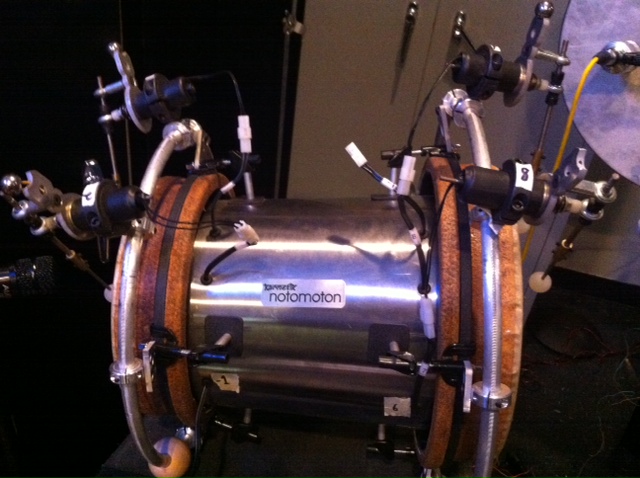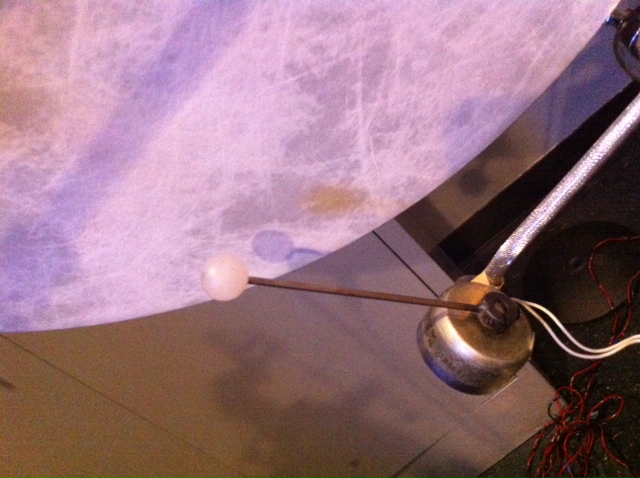Spent four days last weekend working with Andrew Schloss at the Universal Audio studio on a new duo quasi-improvised piece. The focus of the current effort is to combine acoustic sound, both performed directly and remotely via robotic actuators, with electronic processing of that sound. The new work is being presented at the ICIT “New Directions” Symposium at the University of California at Irvine, which is being held between March 1st and March 3rd, 2013.
The piece uses the "NotomotoN," an instrument designed by Ajay Kapur consisting of an Indian two-headed drum with ten remotely-controllable beaters. (The name of this instrument is a palindrome; I am not sure of the correct pronunciation, though I like "no-TOM-o-ton," i.e. rhyming with "automaton."

We chose to remove six of the beaters and mount them on frame drums of various sizes. These drums are separated in space. The drums are then mic'ed and the sound processed via computer.

Complementing this electronic/mechanical percussion ensemble, I play mandolin, mando-cello (a cello-sized mandolin) and mandolin banjo (banjo body, mandolin tuning). The sound from these instruments is processed via Universal Audio plug-ins and sent through processing similar to what is being used for the frame drums.
The signal processing and mechanical actuators are under the control of the Radiodrum 3D sensor. Further control is provided by a set of programmable foot pedals for each of the performers. The signal processing algorithm is one I designed based on a four-channel reverberation topology. However, rather than use this as a reverberator, I modified it to be a form of physical model of inter-connected pipes. Limiters were included at junction points so that the structure can be driven hard and with virtually no loss coefficients without causing distortion. The Radiodrum then has control over various delay lengths, the degree of loss in the system, the degree of low pass filtering in the feedback path, and other parameters. This signal processing was first developed for Underground Economy.
The challenge of playing the improvised mandolin part is that I am responsible for all pitch, other than the vague pitches of the drums. Also, as a human player, I am in competition with the robotic super-human abilities of the mechanical beaters. Still, as with the other collaborative works Schloss and I have done, we search for musical effects that seem uniquely suited to the peculiarities of the technology we are exploring. Wish us luck on our journey and hope to see you at UC Irvine!